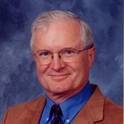Data obtained from the USU incoherent backscatter lidar at Logan Utah during the interval 1994 through 1998 has been analyzed in terms of the climatology of stratospheric and lower mesospheric mean density and density variance (delta) (rho) /(rho) )2 vs. altitude. The total database consists of over 322 nights of cloud-free data over the altitude range, 40 to 90 km. We selected a subset of 142 days (886 hours) of the highest signal to noise ratio data for the analysis. The temporal and spatial resolutions were 2 minutes and 112.5 meters respectively. We compared the mean density profiles, normalized to MSISe90 on a monthly and seasonal basis to MSISe90. The mean density profiles compared well with the MSISe90 model with the following exceptions. The measured densities were less than MSISe90 predictions in the 45 to 80 km range by up to 10% in the 1st calendar quarter, and greater than MSISe90 density predictions in the last calendar quarter, by about 8 to 10 %, but over a narrower altitude range. The density variance profiles (delta) (rho) /(rho) )2 are proportional to the mean free energy of the atmospheric gravity wave and turbulent structure.
Article
Lidar Observations of Stratospheric-Mesospheric Density Structure and itsClimatology at Logan, Utah
Laser Radar: Ranging and Atmospheric Lidar Techniques III
Document Type
Contribution to Book
Publication Date
1-1-2002
Disciplines
Abstract
Citation Information
Sears, R.D., and V.B. Wickwar, Lidar observations of stratospheric-mesospheric density structure and its
climatology at Logan, Utah, in Laser Radar: Ranging and Atmospheric Lidar Techniques III, edited
by U. Schreiber, C.H. Werner, G.W. Kammerman, and U.N. Singh, Proceedings of SPIE, 4546, 91–
100, 2002.
